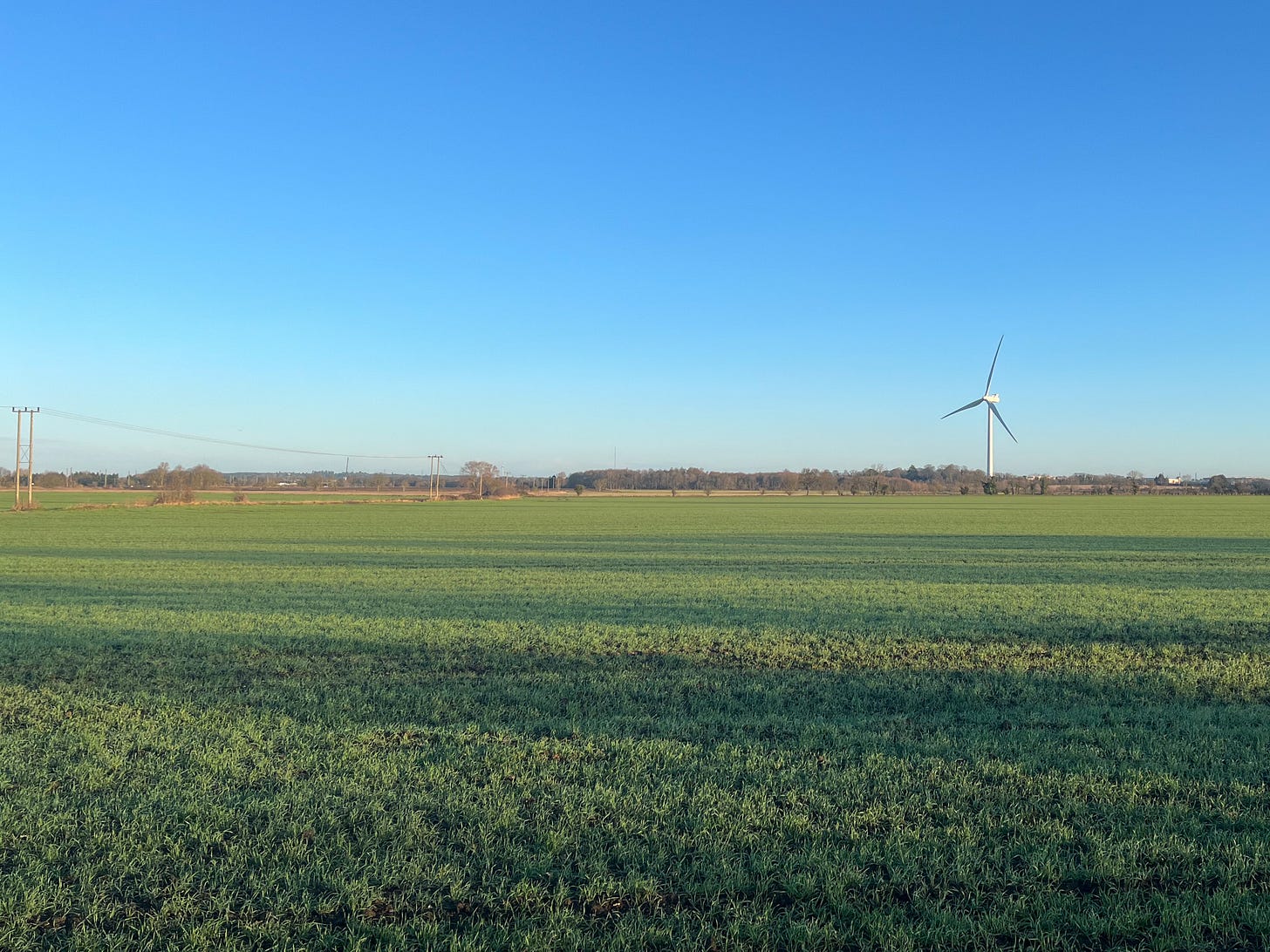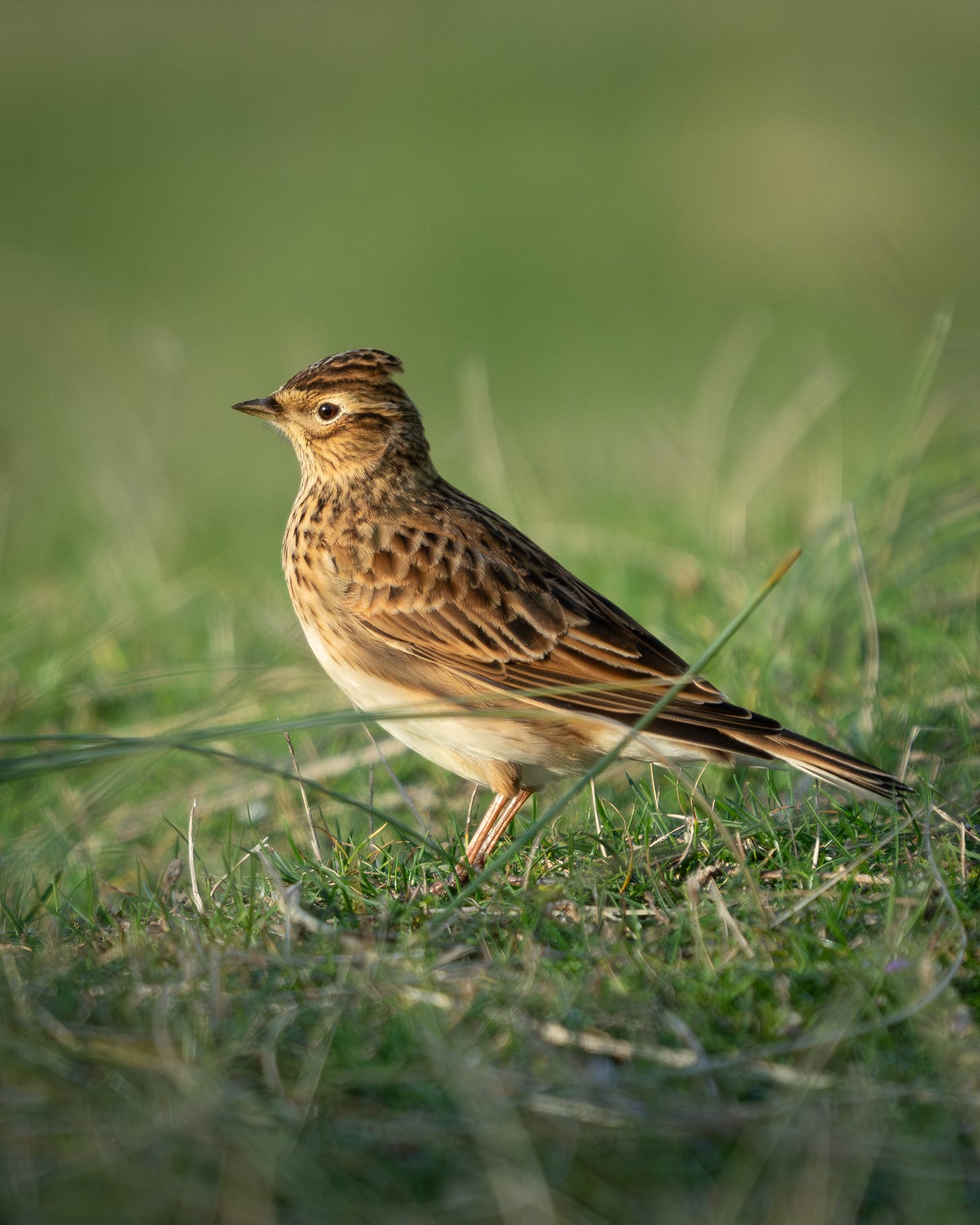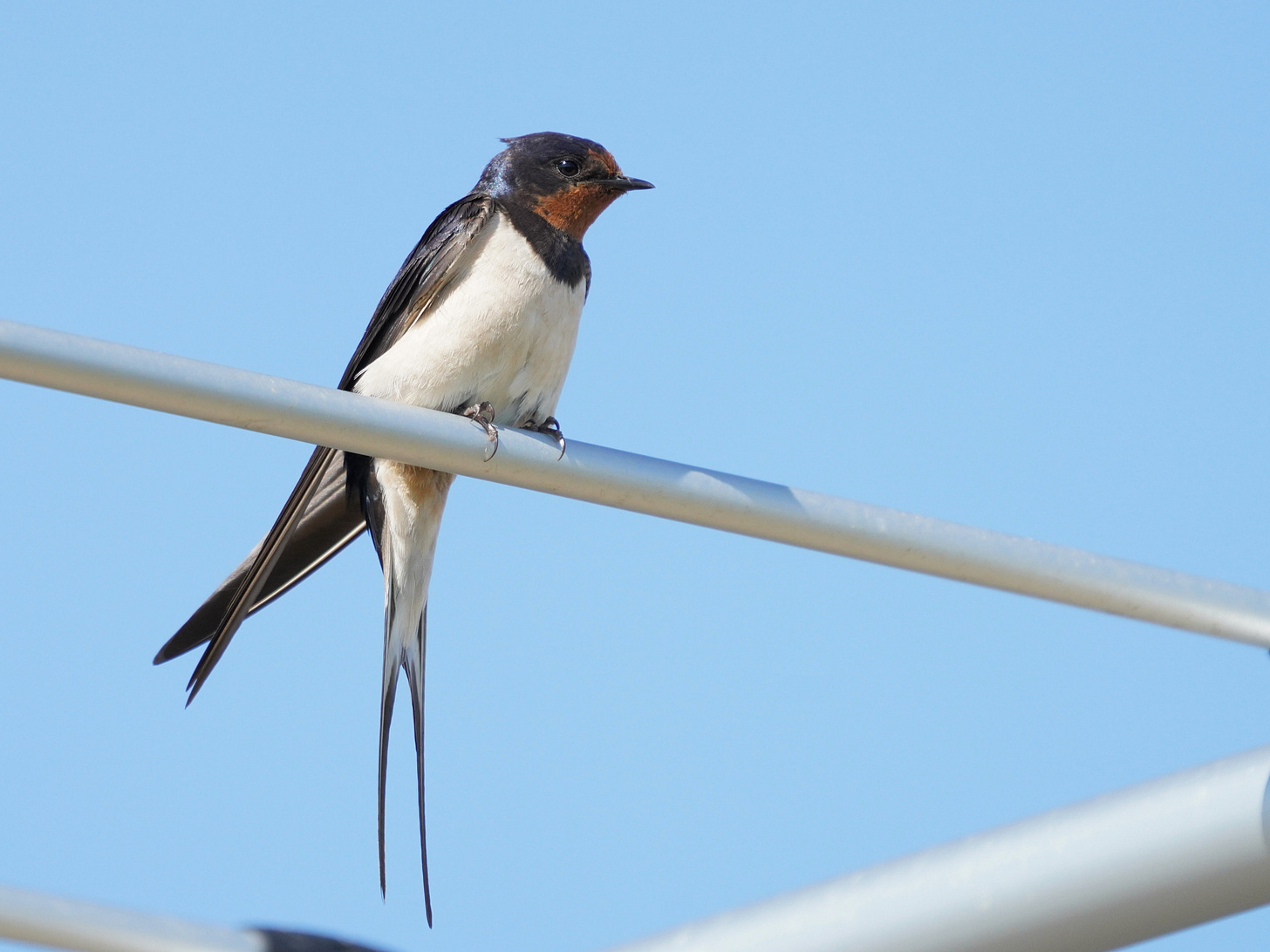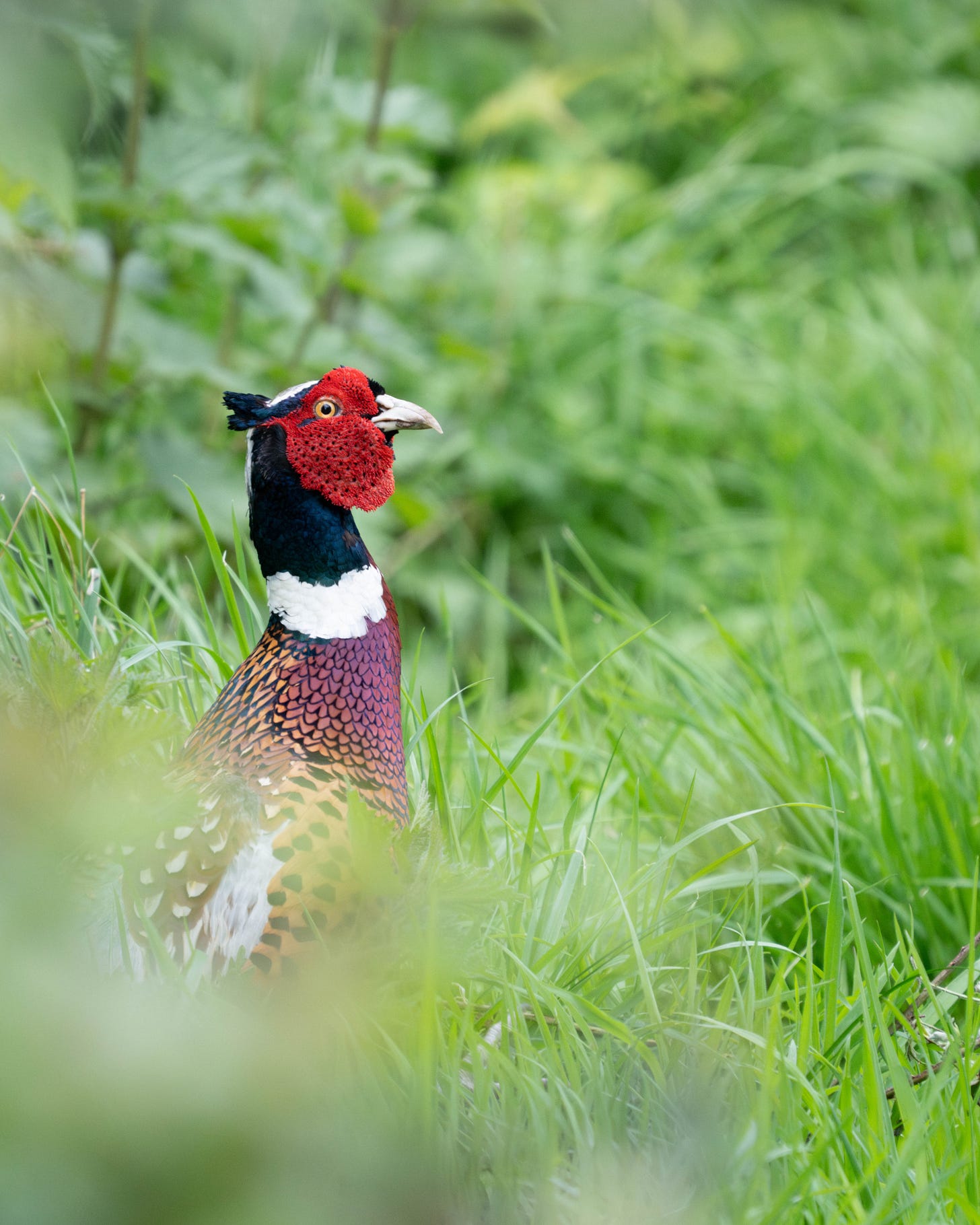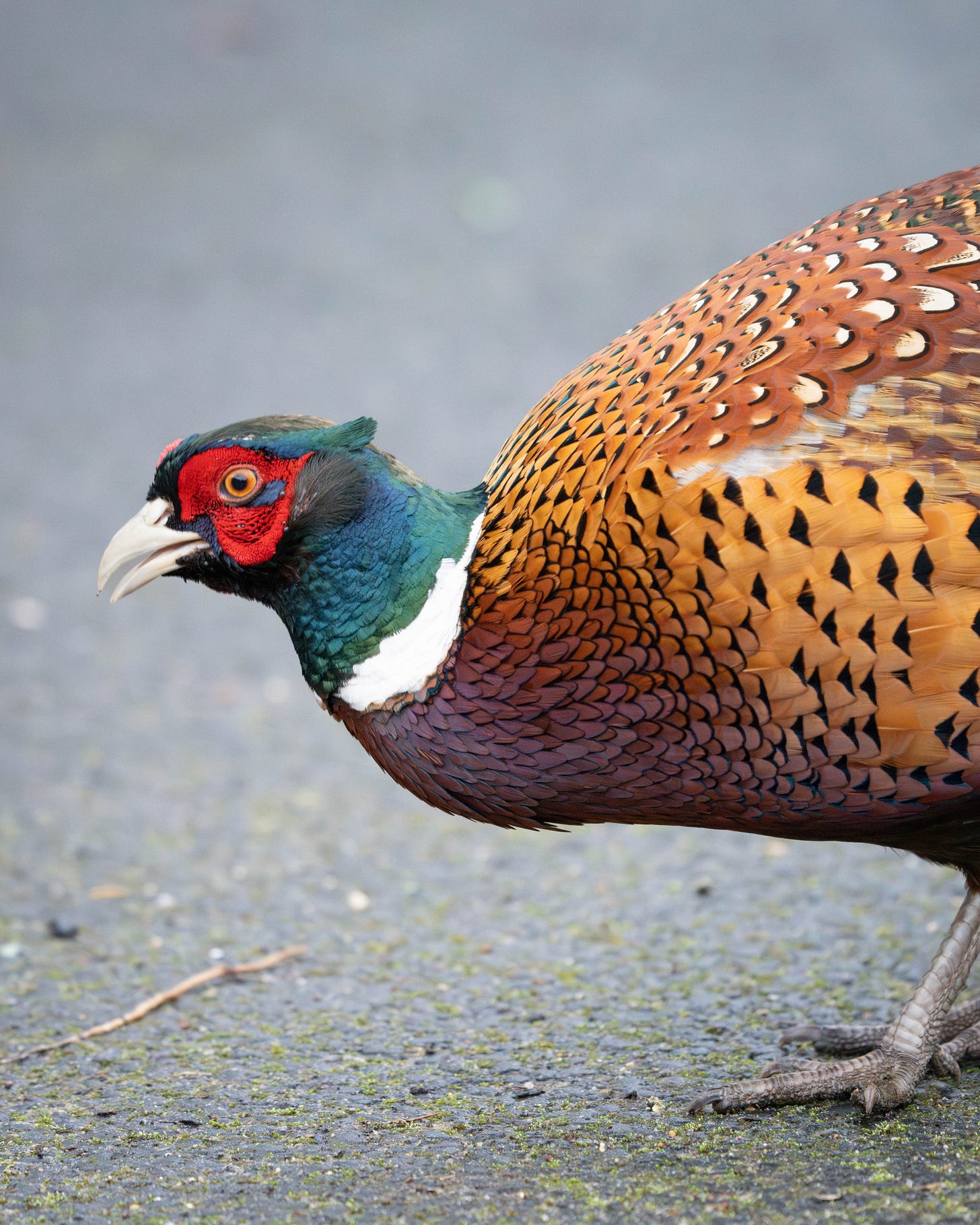What's nature up to this week? (25 April 2025)
Meet some of our fabulous farmland species.
Fields of crops can appear rather monotonous at first glance. But there’s plenty of wildlife in there, if you know where to look.
Take the new feature around the hedgerows that border these fields, for instance. Clouds of hawthorn flies – shiny black flies with elongated legs dangling beneath them. Their true name, St Mark’s Fly, indicates that they’re a little premature this year, as they usually emerge en masse around St Mark’s Day on 25th April. (I wonder if the ever-increasing average temperature will eventually render their name completely inaccurate?)
These flies are not just shiny little jewels that decorate the airspace around hawthorn bushes – they are vital pollinators. And a favourite food of many hedgerow birds due to their inability to carry out evasive manoeuvres while at rest… perhaps because of those enormous legs?!
When the birds spot you first
Out in the open field, a pheasant explodes into flight from its hiding place, making that weird ‘strangled chicken’ squawk noise. They often wait in hiding until you’re almost upon them, before losing their nerve and taking to the air.
And then, a smaller eruption: a skylark comes bursting out of the margins of the field. He ascends, higher and higher, fluttering his wings and singing that beautiful chattering song that goes on forever.
Next come the swallows. Freshly returned from wintering in Africa, these tiny birds dart along the top of the crops. As they twist and turn to catch those hawthorn flies, their metallic blue plumage flashes in the sunlight. If you see them near water, watch for dramatic dives as they skim newly emerged flies from the surface.
Flowers are bursting from the undergrowth, too. Wild garlic sends up spikes with a ball of dainty white flowers in the woods. There are tons of both white and purple ‘dead nettles’ this year. They aren’t true nettles – there’s no sting in their hairy leaves – but they often grow mixed in with the real deal.
And bluebell season is upon us. These little bell-shaped flowers create carpets of blue in deciduous woodlands. Once trampled, they rarely recover – so after his photo op on a small deer path, Jasper is quickly put back on his lead. He’s partial to charging around in leaf litter, but he’ll have to wait a few weeks for the all-too-fleeting bluebell season to end.
Eyes to the skies
This is the perfect time of year to see even the most illusive birds of prey (or ‘BOPs’, as birders often call them). The female is likely sitting on eggs, meaning the male has to work double time to keep her fed.
In Barn Owls, this means hunting during daylight. And as owls can’t hunt in the rain (wet feathers are no longer silent), pauses in bad weather are an especially good opportunity to spot them.
If the eggs have hatched, that means hungry mouths to feed. So while both parents can leave the chicks, they still need to work overtime. And for our local peregrine falcon family, this time of year also requires them to have a strong presence. They wheel around their pylon nest-site, seeing off buzzards, kites, ravens and anyone else who wanders too close to their precious, vulnerable chicks.
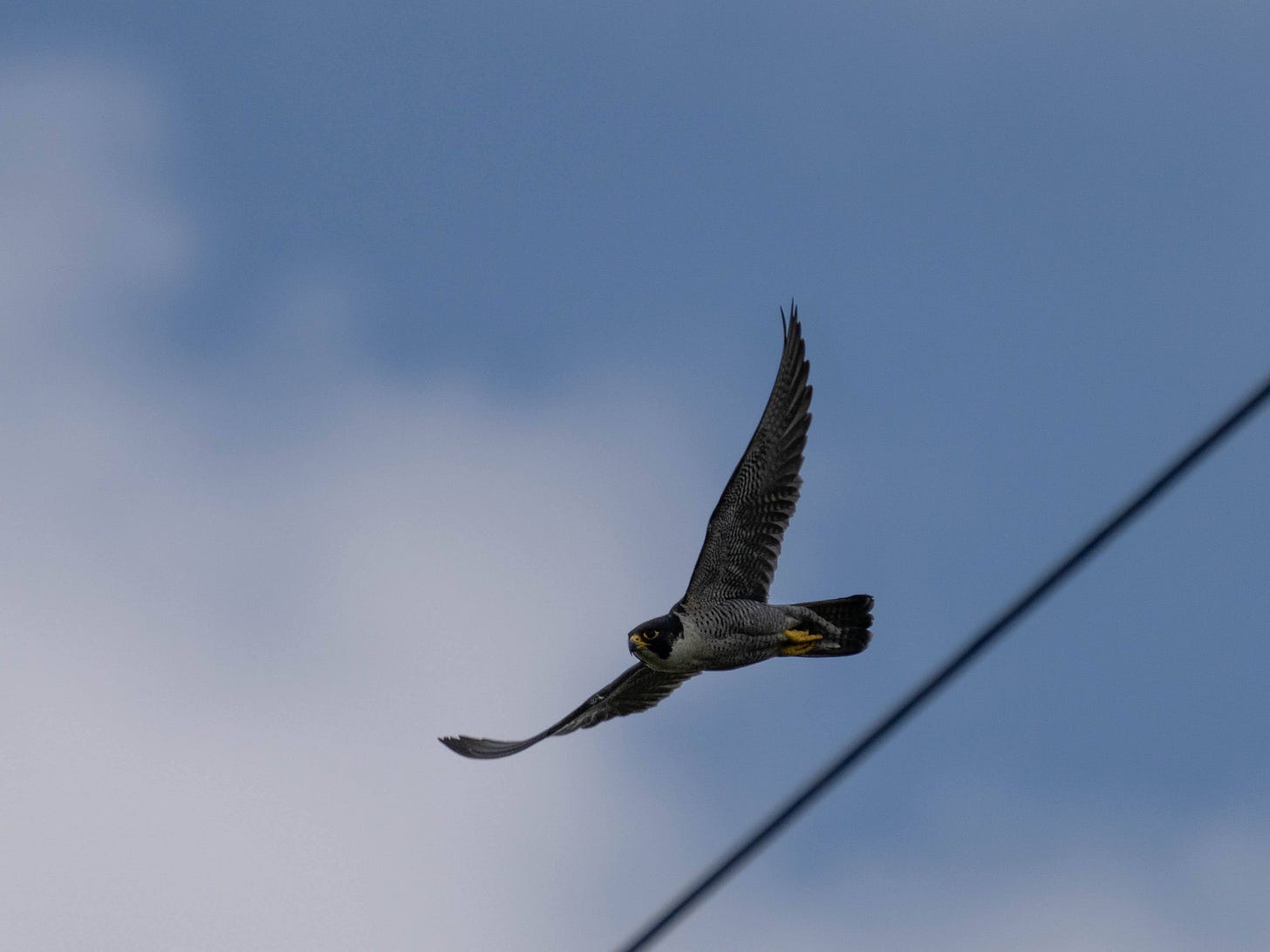
And on sunny days, you might spot tens of buzzards and kites riding the thermals of warm air together, soaring upwards in columns without a single flap of their wings.
Through my lens
Despite being non-native, humans release millions of pheasants every year in the UK, just to shoot. They are voracious eaters. They’ll consume anything they can fit in their beak, including lizards, bird eggs and mice.
However – their breeding plumage is absolutely sublime, so I can never resist ‘shooting’ them (with my camera, to be clear) either!
Your turn!
I’d love to hear about your encounters with nature, wherever you are in the world. What have you seen this week, while I was dodging flies and birds out in the fields?
If this made you smile or inspired you to go looking for nature, a little tap of the ‘Like’ button goes a long way. Thanks for reading!
Gem


